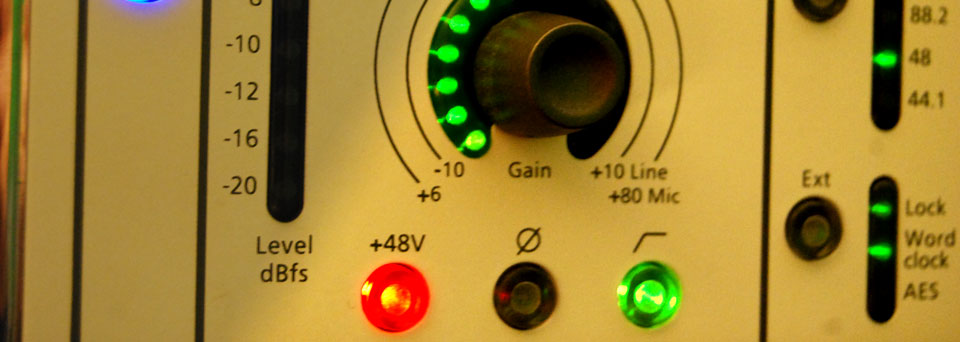Now, click to watch our video at our sister site (or read on) ..
Source devices which utilise phantom power
The following are the primary source devices which are designed to work with phantom power ..
Devices which supply phantom power
- mic pre-amps (stand alone, or located in a mixer, audio interface or recorder etc)
- video camcorders
- dedicated "stand alone" power supplies both mains and battery powered
- battery packs (usually located inside the body of a microphone)
Phantom power voltages
The standard rating is 48v. Often source devices can operate from lower rated battery packs (typically at 9v) but with a lower output and therefore a poorer signal to noise ratio. If you have a choice, don't use batteries.
Sending phantom power to a device
The standard way to get 48v phantom power to a source device is to send it down the same balanced cable (XLR) lead which is carrying the audio signal from the source device. So for example, a mic pre-amp would send phantom power to a capacitor microphone and receive its audio output in return. The signals travel in "opposite" directions (out of phase) to each other, and therefore do not interfere with each other. The positive phantom power signal runs on the Live and Return wires whilst the negative runs on the Earth.
Connecting a DI box or microphone to a mic pre-amp
Enabling phantom power can create a brief and loud peak signal (a bang!). Also connecting a cable with it enabled can risk sending it down the wrong wire. To avoid damage to your speakers or source device ...
- Ensure the audio output of the mic pre-amp is muted
- Turn on the mic pre-amp
- Ensure phantom power is disabled
- Connect your microphone or DI box using a balanced XLR mic cable
- Enable the phantom power (turn it on) at the mic pre-amp
- Un-mute the audio output of the mic pre-amp
A warning!
Ribbon microphones not only do not require phantom power, but can be seriously damaged by it, so extreme care must be taken when using them with a mic pre-amp.
Passive DI boxes and dynamic microphones do not require phantom power either, but will not be damaged by it.

